Topics 2017
September 2017
Sep. 26, 2017 Updated
UNOOSA and JAXA open Third round of KiboCUBE
|
Japan Aerospace Exploration Agency and the United Nations Office for Outer Space Affairs, UNOOSA, launched a three year “KiboCUBE” programme in September 2015, which offered developing countries the opportunity to deploy small satellites from Japanese Experiment Module “Kibo” on the International Space Station (ISS). This initiative aims to contribute to the technological advancement of space activities in developing countries, and its first and second round of applications have been conducted until now. Photo: Media Briefing at IAC 2017 in Adelaide September 26, 2017 |
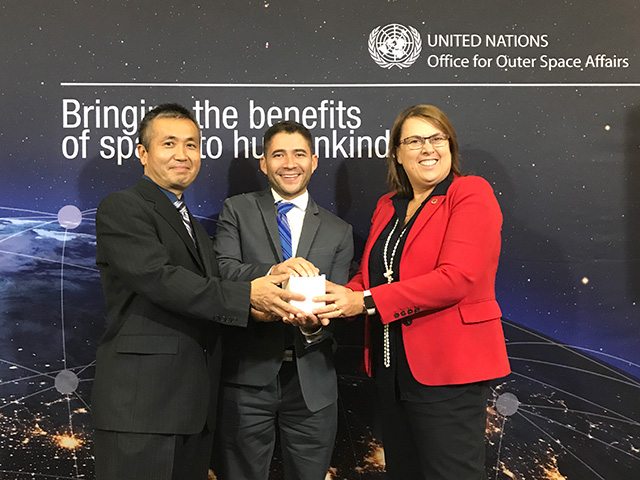 |
|---|
Sep. 12, 2017 Updated
T-8 weeks+, ASNARO-2/Epsilon 3 Launch on November 12
|
JAXA announces that the Epsilon 3 launch encapsulating the second Advance Satellite with New System Architecture for Observation (ASNARO-2) is scheduled on November 12, 2017. The launch window is 6 a.m. through 6:35 a.m., in Japan Standard time. |
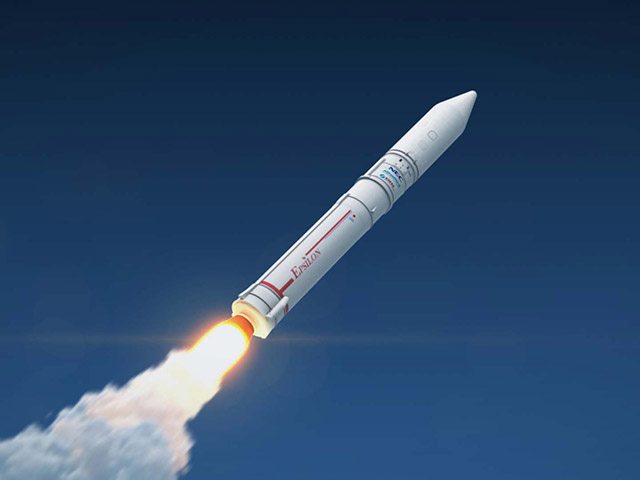 |
|---|
Sep. 8, 2017 Updated
KIBO Space Mouse Experiment Published on Scientific Reports
|
JAXA conducted a long-term experiment on mice under two different gravitational conditions – microgravity (μg) and artificial earth-gravity (1 g). This was JAXA’s first attempt using the newly developed mouse habitat cage units installed in the Centrifuge-equipped Biological Experiment Facility (Images) in the KIBO Experiment Module aboard the International Space Station. Following their 35-day habitation in space, JAXA, in collaboration with Tsukuba University and other academic institutions went through the analysis of the bone density and muscle mass of the space mice brought back to the Earth. μg mice experienced significant decreases in their bone density and muscle weights, which were not present in artificial 1 g mice. These data indicate that gravity determines the general body structure of animals. This result was derived through the comparison of the effects of altered gravitational conditions alone, eliminating other variations. At 10 a.m. (U.K. time), September 7, “Scientific Reports”, an online journal from the publishers of “Nature” published this research. The findings will advance space exploration and elucidate the evolutional process of animals on Earth, where the gravity is a principle force. |
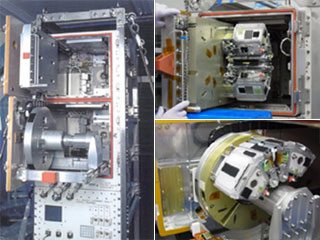 |
|---|
August 2017
Aug. 19, 2017 Updated
Success of H-IIA F35 Launch with MICHIBIKI-3 Aboard
Jul. 25, 2017 Updated
ALOS-2 Captures Massive Iceberg’s Breakoff from Antarctica
|
On July 12, 2017, an iceberg split off from Antarctica’s Larsen C iceberg. With use of ALOS-2’s wide-area observatory mode, JAXA was able to capture the entire calving image. |
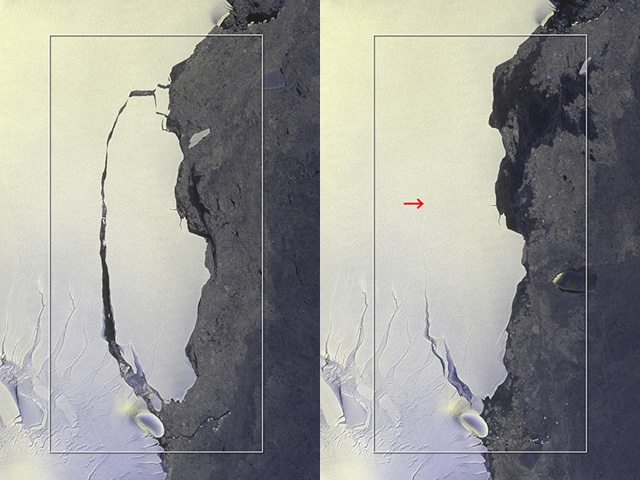 |
|---|
Jul. 14, 2017 Updated
SHIKISAI & TSUBAME, New Names of GCOM-C & SLATS
|
JAXA announced the month-long project to invite the public to rename the Global Change Observation Mission – Climate (GCOM-C) and the Super Low Altitude Test Satellite (SLATS), both to launch together this fiscal year. After careful examination of the 12,895 applications, SHIKISAI, meaning colors in Japanese has been chosen as new name of GCOM-C, and likewise, TSUBAME, or swallow, of SLATS. |
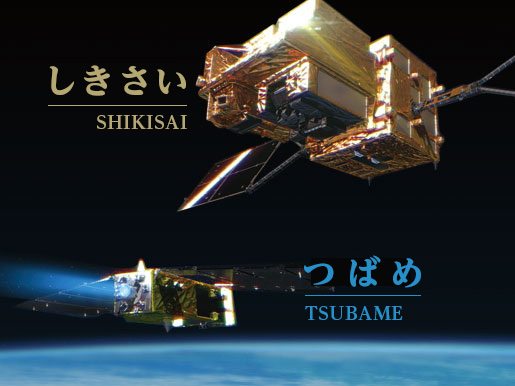 |
|---|
Jul. 12, 2017 Updated
Send EPSILON-3 up to Space with Cheer
|
JAXA is inviting all to write notes to cheer on the project members and the mission of Epsilon-3, to be launched this fiscal year. Application Deadline: 5 pm (JST), August 7, 2017 |
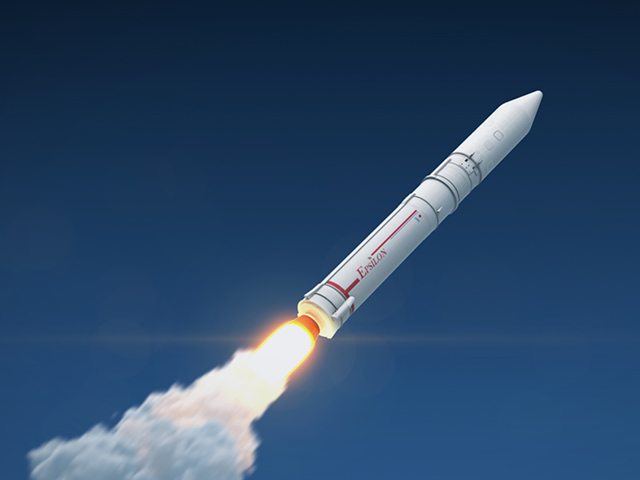 |
|---|
Jun. 13, 2017 Updated
KIBO Experiment Video Is up on Government’s Innovation Japan Website
|
The video of protein crystallization is up on Innovation Japan, Cabinet Secretariat’s website – conducted by JAXA’s astronaut Takuya Onishi in KIBO module on his last long term International Space Station expedition. JAXA’s strategic partnership with Japanese biopharma, PeptiDream Inc. has been crystallized into this innovative experiment under near zero G. |
 |
|---|
Jun. 1, 2017 Updated
Success of H-IIA F34 Launch with MICHIBIKI-2 Aboard
May 25, 2017 Updated
Freeze-Dried Spermatozoa Preserved in KIBO Reproduces World’s First Space Mouse
|
Sayaka Wakayama (Advanced Biotechnology Center, University of Yamanashi), Teruhiko Wakayama (Faculty of Life and Environmental Sciences, University of Yamanashi), Sachiko Yano (Space Environment Utilization Center, JAXA) and other researchers examined the damage that irradiation causes to mouse spermatozoa held in Japanese KIBO experiment module aboard the International Space Station. Using freeze-dried spermatozoa, the research team produced healthy offspring, and thus accomplished the unprecedented feat in biological sciences. |
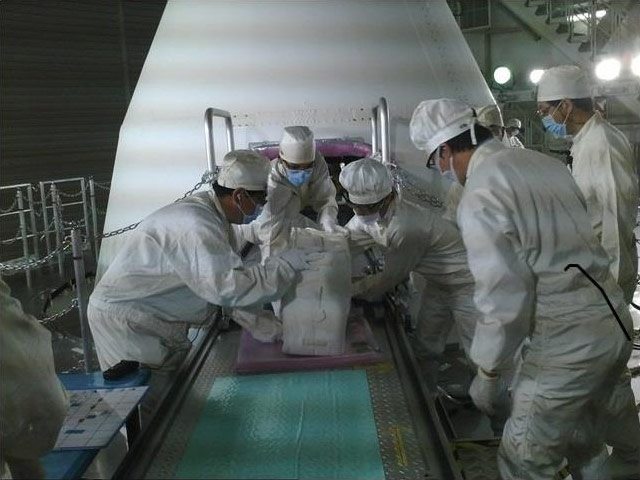 |
|---|
March 2017
Mar. 31, 2017 Updated
LE-9 Engine Assembled, Shipped for Testing
|
On March 31, in Tanegashima Space Center, LE-9 engine for the new H3 type of launch vehicles was installed on the facility’s firing test stand used for liquid fuel boosters. The test schedule will be available on the website as soon as determined. |
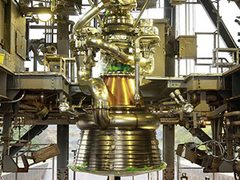 |
|---|
Mar. 29, 2017 Updated
Arase off to Science Operations Phase
|
JAXA confirmed completion of the commissioning phase of ARASE, formerly known as ERG, Exploration of energization and Radiation in Geospace. ARASE has entered its science operations phase. The call was made as the following procedure took place as scheduled and was confirmed; the satellite post launch orbital systems are in place, their functions are determined as fine, all monitoring instruments are installed, and the motions of the monitoring equipment are checked. |
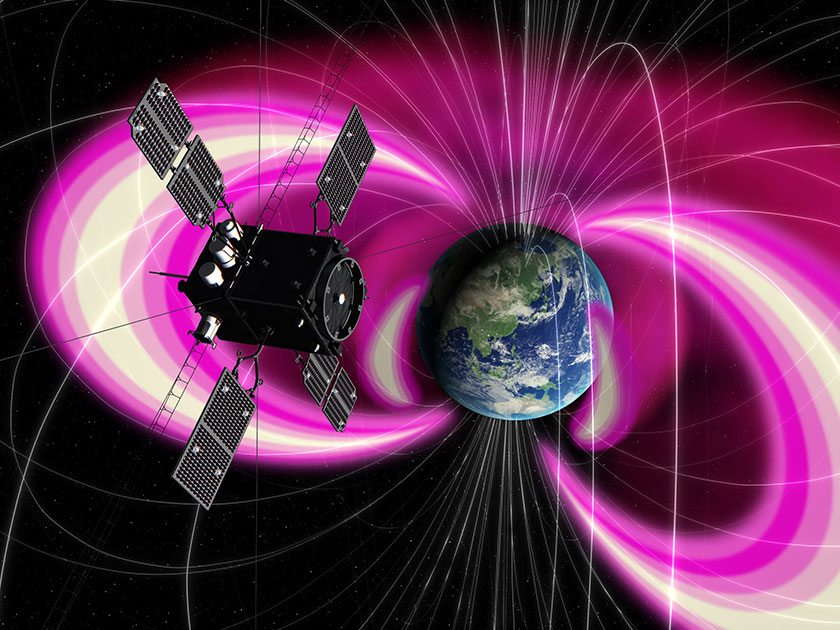 |
|---|
Mar. 24, 2017 Updated
Tanegashima Space Museum to Reopen
|
On March 26, Tanegashima space museum will reopen after its first renovation in 20 years. |
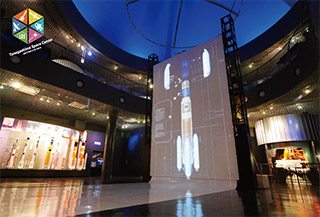 |
|---|
Mar. 23, 2017 Updated
Continued Record Low Antarctic Sea Ice Extent
|
Global sea ice extent hit record low, according to observations from Shizuku on Global Change Observation Mission on January 14, 2017. It is all time low in the history of GCOM-W operation that started in 1978, JAXA continues operation of Shizuku and GCOM-C and monitoring arctic sea ice extent, off the coast of Greenland Sea and the rest of the arctic circle. |
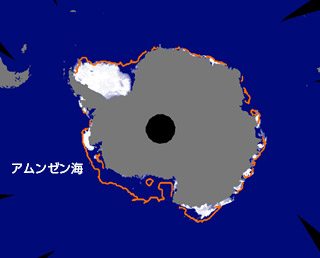 |
|---|
February 2017
Feb. 22, 2017 Updated
QZS-1 off to the Cabinet Office’s Control
Feb. 21, 2017 Updated
GCOM-W: Sea Ice Hits Record Low
|
Global sea ice extent hit record low, according to observations from Shizuku on Global Change Observation Mission on January 14, 2017. It is all time low in the history of satellite operation that started in 1978, JAXA continues operation of Shizuku and GCOM-C and monitoring arctic sea ice extent, off the coast of Greenland Sea and the rest of the arctic circle. |
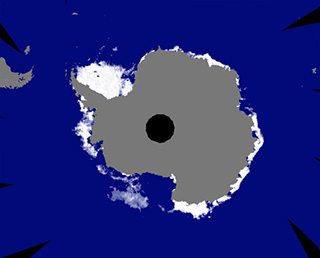 |
|---|
Feb. 6, 2017 Updated
KOUNOTORI6 completed its mission with re-entry!
|
The KOUNOTORI6 (HTV6, a cargo transporter to the International Space Station) left the ISS on Jan. 28 and re-entered the atmosphere at around 0:06 a.m. on Feb. 6 (Japan Standard Time.) |
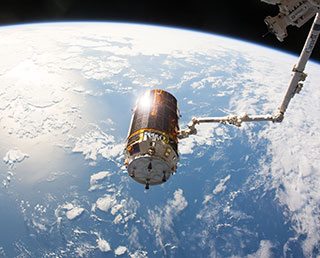 |
|---|
January 2017
Jan. 16, 2017 Updated
Successful deployment of six CubeSats delivered by KOUNOTORI6
|
On January 16, 2017, from 6:10 p.m. – 7:50 p.m. (Japan time), a total of six microsatellites abroad HTV6 were successfully deployed into orbit from the Japanese Experiment Module (“Kibo”). |
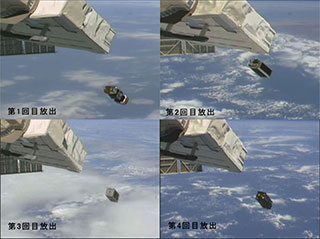 |
|---|
Jan. 11, 2017 Updated
Completion of KIKU No. 8 Operation
|
At 3:25 p.m., (Japan Standard Time) January 10, 2017, JAXA terminated its Engineering Test Satellite-VIII KIKU No.8 (ETS-III) transmission, thus brought a closure to the satellite’s operation. |
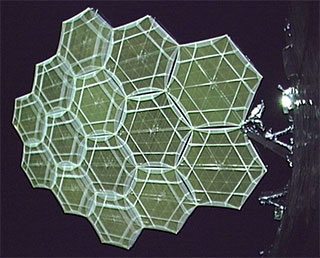 |
|---|
Updates 2017
-
- Sep. 25, 2017 [ISS / Japanese Experiment Module (KIBO)]
- UNOOSA and JAXA open Third round of KiboCUBE
-
- Sep. 25, 2017 [ISS / Japanese Experiment Module (KIBO)]
- JAXA and NASA hold their second workshop on ISS utilization!
-
- Sep. 11, 2017 [ISS / Japanese Experiment Module (KIBO)]
- Release on updated images of Kibo’s internal drone “Int-Ball” (Int-Ball Letter Vol. 5)
-
- Sep. 10, 2017 [ISS / Japanese Experiment Module (KIBO)]
- Second selection for CubeSat deployment under the joint JAXA-United Nations Office for Outer Space Affairs (UNOOSA) initiative
-
- Sep. 6, 2017 [ISS / Japanese Experiment Module (KIBO)]
- Asian Try Zero-G 2018 Experiment Ideas Selected
-
- Sep. 6, 2017 [Institute of Space and Astronautical Science (ISAS)]
- Akatsuki Revealed Equtorial Jet in the Venusian Atomosphere
-
- Aug. 27, 2017 [ISS / Japanese Experiment Module (KIBO)]
- Release on updated images of Kibo’s internal drone “Int-Ball” (Int-Ball Letter Vol. 4)
-
- Aug. 22, 2017 [ISS / Japanese Experiment Module (KIBO)]
- Kibo-ABC Member Countries’ News: Thailand
-
- Aug. 22, 2017 [Employment Opportunities]
- JAXA Aerospace Project Research Associate Recruitment 2018
-
- Aug. 22, 2017 [Institute of Space and Astronautical Science (ISAS)]
- Great American Eclipse on 21 August 2017: public release of images and videos taken by the “Hinode” satellite
-
- Aug. 12, 2017 [ISS / Japanese Experiment Module (KIBO)]
- Release on updated images of Kibo’s internal drone “Int-Ball” (Int-Ball Letter Vol. 3)
-
- Aug. 10, 2017 [Earth Observation Research Center (EORC)]
- “GSMaP RIKEN Nowcast” is now available
-
- Aug. 4, 2017 [Employment Opportunities]
- Job Announcement for Associate Professor Position (full time) at ISAS
-
- Aug. 4, 2017 [Institute of Space and Astronautical Science (ISAS)]
- The night of Venus: unpredictable winds, still waves and fast-changing clouds
-
- Aug. 4, 2017 [Institute of Space and Astronautical Science (ISAS)]
- Akatsuki’s web site English ver. has been released
-
- Aug. 3, 2017 [ISS / Japanese Experiment Module (KIBO)]
- Release on updated images of Kibo’s internal drone “Int-Ball” (Int-Ball Letter Vol. 2)
-
- Aug. 3, 2017 [ISS / Japanese Experiment Module (KIBO)]
- JAXA released the 4K movie shooted by Hi – Vision camera mounted outside the “Kibo/ISS” for the first time.
-
- Jul. 31, 2017 [Earth Observation Research Center (EORC)]
- Prof. Teruyuki Nakajima, the director of EORC, was elected the 2017 Fellow by the American Geophysical Union.
-
- Jul. 26, 2017 [Earth Observation Research Center (EORC)]
- ALOS-2/PALSAR-2 Observation results on detachment of a large iceberg from Larsen-C Ice Shelf in Antarctic Peninsula
-
- Jul. 24, 2017 [ISS / Japanese Experiment Module (KIBO)]
- Release on updated images of Kibo’s internal drone “Int-Ball” (Int-Ball Letter Vol. 1)
-
- Jul. 19, 2017 [International Cooperation]
- Dr. Horikawa Publishes on IAPS Dialogue
-
- Jul. 14, 2017 [ISS / Japanese Experiment Module (KIBO)]
- First disclosure of images taken by the JEM Kibo’s internal drone “Int-Ball”
-
- Jul. 10, 2017 [ISS / Japanese Experiment Module (KIBO)]
- Successful deployment of five “BIRDS project” CubeSats from the “Kibo”
-
- Jul. 6, 2017 [ISS / Japanese Experiment Module (KIBO)]
- The JAXA Protein Crystal Growth experiment begins -sixth session of the second series-
-
- Jul. 6, 2017 [ISS / Japanese Experiment Module (KIBO)]
- Space mice and normalcy of spermatozoa DNA preserved long-term onboard “Kibo” on the International Space Station-Demonstrating the potential of mankind’s reproduction in space-
-
- Jul. 6, 2017 [ISS / Japanese Experiment Module (KIBO)]
- Observation results of the Protein Crystal Growth Experiment conducted onboard “Kibo” (Flash report)
-
- Jun. 30, 2017 [Project Topics]
- Updates on Development of LE-5B-3 Engine – Firing Test Begins
-
- May 26, 2017 [Aeronautical Technology Directorate]
- JAXA begins demonstration tests on snow and ice monitoring sensors
-
- May 23, 2017 [ISS / Japanese Experiment Module (KIBO)]
- Press release announcing an experimental outcome of the CubeSat FREEDOM:
-
- May 18, 2017 [Institute of Space and Astronautical Science (ISAS)]
- First Direct Exploration of Magnetic Fields in the Upper Solar Atmosphere – Ultraviolet spectropolarimetry opens a new window for solar physics research –
-
- May 10, 2017 [Earth Observation Research Center (EORC)]
- Global Precipitation Measurement (GPM) Products (Version 5) Release
-
- Apr. 26, 2017 [Special]
- Solving the Problem of Space Debris – Protecting Our Space Environment –
-
- Apr. 21, 2017 [JAXA President Monthly Press Conference]
- JAXA President Monthly Press Conference April 2017
-
- Apr. 18, 2017 [ISS / Japanese Experiment Module (KIBO)]
- Why don’t fish freeze to death in icy water?
-
- Apr. 18, 2017 [ISS / Japanese Experiment Module (KIBO)]
- Initiating the joint exposed experiment with the Republic of Turkey utilizing the Exposed Experiment Handrail Attachment Mechanism(ExHAM)
-
- Apr. 13, 2017 [Employment Opportunities]
- Job Announcement for Professor Position (full time) at ISAS
-
- Apr. 7, 2017 [Employment Opportunities]
- Call for Applications: JAXA International Top Young Fellowship in 2017
-
- Apr. 1, 2017 [Employment Opportunities]
- Position Available: Internship 2017
-
- Mar. 31, 2017 [Project Topics]
- LE-9 Engine Assembled, Shipped for Testing
-
- Mar. 29, 2017 [Institute of Space and Astronautical Science (ISAS)]
- Subaru Telescope Detects the Shadow of a Gas Cloud in an Ancient Proto-supercluster
-
- Mar. 27, 2017 [JAXA President Monthly Press Conference]
- JAXA President Monthly Press Conference March 2017
-
- Mar. 22, 2017 [Institute of Space and Astronautical Science (ISAS)]
- The Third ISAS Award (FY 2016)
-
- Mar. 16, 2017 [ISS / Japanese Experiment Module (KIBO)]
- ISS/Kibo Monthly News: February, 2017
-
- Mar. 9, 2017 [JAXA President Monthly Press Conference]
- JAXA President Monthly Press Conference February 2017
-
- Mar. 3, 2017 [Institute of Space and Astronautical Science (ISAS)]
- Two cameras on Akatsuki pause observations
-
- Mar. 1, 2017 [ISS / Japanese Experiment Module (KIBO)]
- ISS/Kibo Monthly News: January, 2017
-
- Feb. 28, 2017 [ISS / Japanese Experiment Module (KIBO)]
- Kibo-ABC Member Countries’ News: Thailand
Comments are closed.